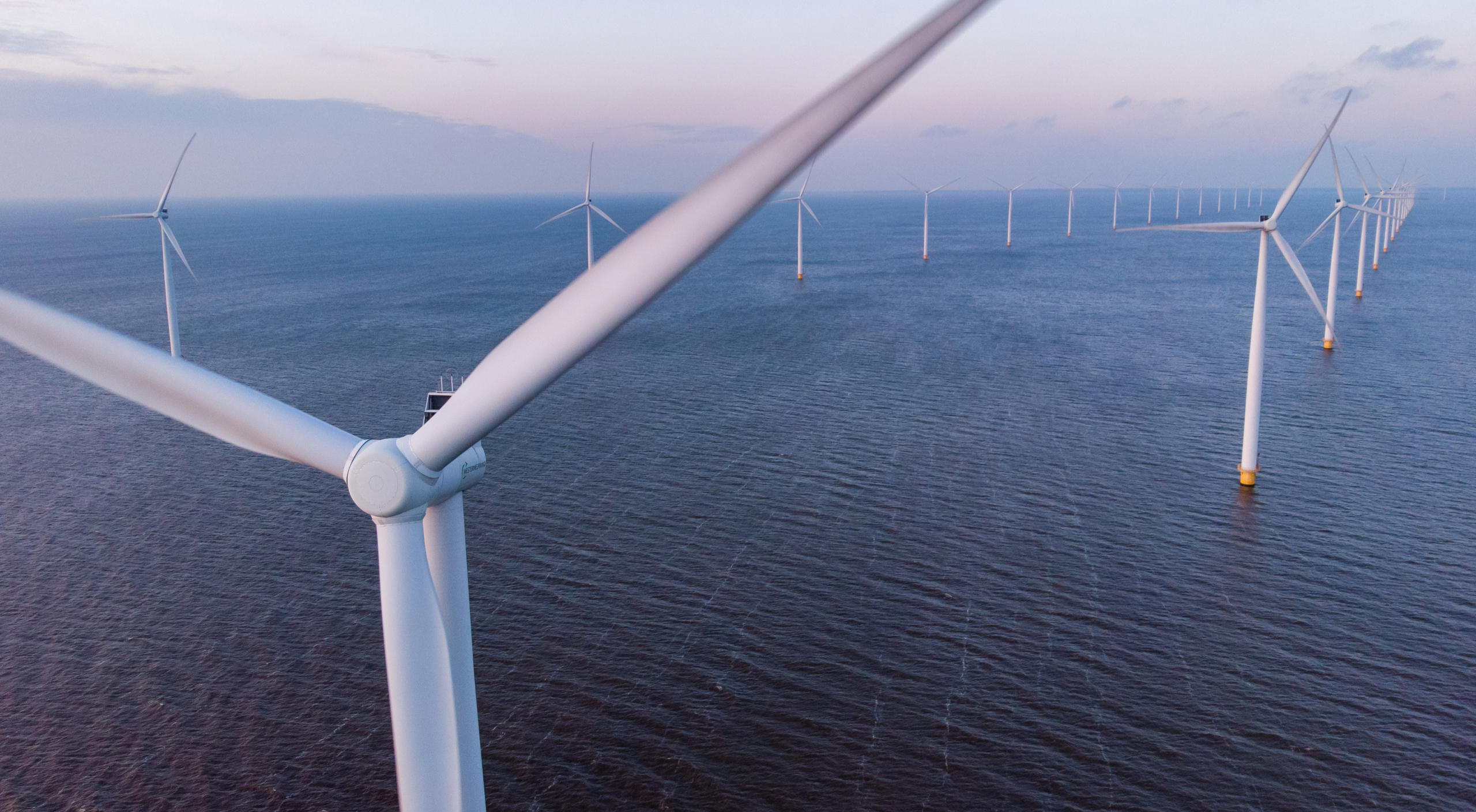Energy transition: Fostering a green Europe
The fight against global warming is the biggest challenge of mankind. EPEX SPOT contributes to the decarbonisation of the energy sector with new products, services, and active involvement in political processes.

Global warming affects us all: if we don’t change the way we produce and consume energy, earth will soon be uninhabitable. Industry and politics alike have understood the urgency and are making the shift.
After the adoption of the Clean Energy Package in May 2019, one further important step took place in December 2019, when the European Commission presented the European Green Deal. Its key goal: becoming the first climate-neutral continent by 2050. At the same time, the EU promises to help companies in their way to become world leaders in clean products and green technologies.
High speed towards decarbonisation
With regard to energy – one of several fields of action of the EU Green Deal – the targets are:
- Promotion and integration of renewable energy sources;
- Decarbonisation of energy-intensive industries;
- A sustainable products policy targeting resource-intensive industries.
The European Power Exchange EPEX SPOT is actively taking part in bringing these targets to life – with a focus on renewables and on smart sector integration.
of Europe’s electricity mix came from renewable energy sources in 2020, compared with only 37% for fossil fuels*. *Source: Agora Energiewende/Ember
Renewables: Destination full market integration
EPEX SPOT is playing an active part in the policy debates on renewables deployment and integration. In that context, EPEX SPOT published a paper outlining the necessity to enable an energy system largely depending on renewable energy sources (RES) to fully rely on a market mechanism to foster system integration, rather than on support schemes.
For years power exchanges have been providing products and services to facilitate the integration of renewables:
- With diverse lead-time reductions that allow for trading until five minutes before delivery;
- 15 and 30-minute products as well as
 Intraday auctions;
Intraday auctions; - As well as performant platforms that offer the option of algorithmic trading.
Moreover, the implementation of local flexibility markets, market-based sector integration and tailor-made indices for renewable generators have been implemented in close cooperation with market participants, reflecting their new needs due to increasing RES production assets.
A subsidy-free future for renewable energy is both necessary and feasible
Renewables should fully contribute and fully react to the price signal
Electricity markets have been ready for full market integration of renewables for a while. Now it is time for the regulatory framework to follow. Only by lifting support schemes and by incentivising reactions to the market price signal can renewables become a full part of the market. The final target should be the full market integration of renewables, i.e. that in the long term, renewables act as any other generation source on the market and are subject to the same rules as all other generation assets. Subsidies including the feed-in premium lead to short-and long-term market price distortions.
The final target should be the full market integration of renewables
It is also a question of fair interaction between production assets: RES are not the root cause for negative prices as frequently claimed – the lack of flexibility at power generation of the overall energy system is.
A key challenge for a successful energy transition is to ensure the full integration of renewable generation into the electricity market and to provide market-based remuneration for renewables. This cost-efficient approach will ultimately benefit the end-consumer.

Smart sector integration: Reliable price signals for better demand-side flexibility
A central pillar of the decarbonisation of the energy sector lies within the smart sector integration – the intelligent connection of all steps from energy production to consumption.
EPEX SPOT strongly supports the view that an integrated energy system shall be at the heart of Europe’s economic recovery and the EU Green Deal. EPEX SPOT estimates that the central role of the price signal as well as the exploitation of demand-side flexibility have to be carved out even further. Only then can smart sector integration truly be achieved.
Power exchanges are coupling frontrunners
It is the natural role of EPEX SPOT to support coupling across sectors, as we are pioneers in the coupling of European power markets. Moreover, our market participants are from diverse sectors and bring the full spectrum of the energy value chain to the table. Plus, EPEX SPOT markets are part of the one-stop-shop model within EEX Group, which unite power and gas markets under the same roof.
Demand-side flexibilities can only unfold their potential through market-based options, such as local flexibility markets.
Competitive, non-discriminatory and liquid markets deliver reliable price signals for electricity, flexibility, gas and CO2 emissions to enable cost-efficient sector integration. The exchange’s price signals trigger short-term generation and consumption as well as long-term decisions on investments in new generation capacities.
A strong and reliable price signal will set the right incentives to run power-to-x plants to produce hydrogen from electricity when it is most efficient. Also, the dissemination of price signals to decentralised assets and loads, such as charging electric vehicles, supports the whole energy system.
Unlock demand-side flexibility potential
According to the European Commission, increased demand-side flexibility could lead to savings of EUR 5.6 billion per year until 2030. EPEX SPOT underlines that market-based solutions are urgently needed to unlock the full potential of demand-side flexibility, to make the energy transition cost-efficient.

Cost-based and regulated mechanisms do not create incentives for the development of demand-side flexibilities. Demand-side flexibilities can only unfold their potential through market-based options, such as local flexibility markets.
Some sector integration is already taking place today in various forms on different markets. With the  Enera project, EPEX SPOT teamed up to investigate the potential of local flexibility markets – with encouraging results.
Enera project, EPEX SPOT teamed up to investigate the potential of local flexibility markets – with encouraging results.

